Phlox "Dragon": description, planting, care and reproduction

Phlox are herbaceous plants and belong to the cyanide family. The name of the flower from the Greek language is translated as "flame", it was assigned to the genus by Karl Linnaeus in 1737 for the brightness of the scarlet flowers of wild specimens. Today, about 40 species of this flower and more than 100 varieties are cultivated; paniculata phlox is the most popular in ornamental gardening around the world.
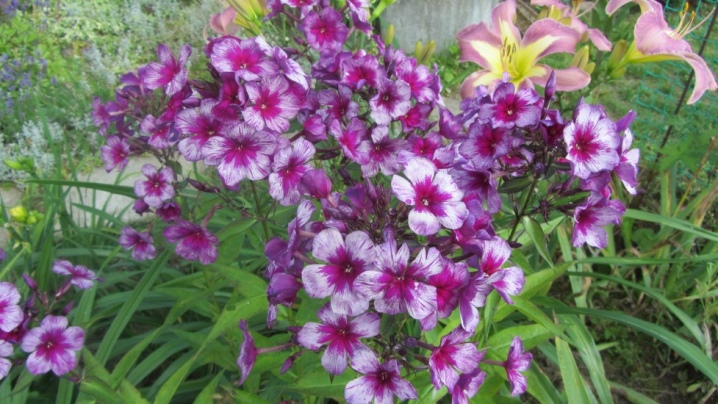
Appearance
Phlox panicled "Dragon" (Drakon) was bred in 1958 by the famous Soviet breeder Pavel Gavrilovich Gaganov... According to the description, this perennial variety reaches a height of 85 cm and has a strong, non-decaying bush. On erect stems there are green, elongated leaves with sharp ends, reaching 10 cm.The roots are very powerful, located in the upper soil layers, the aerial part dies off every year.
In mid-July, phlox "Dragon" has fragrant purple-violet flowers with thin touches of silver-gray on a smoky background along the outer edge of the petals. As it blooms, the strokes merge and form a smoky gray hair. "Dragon" is one of the first smoky varieties. A flower 4 cm in size has a tubular shape with five petals; one inflorescence can contain up to 90 flowers. After the end of flowering, seed boxes ripen.

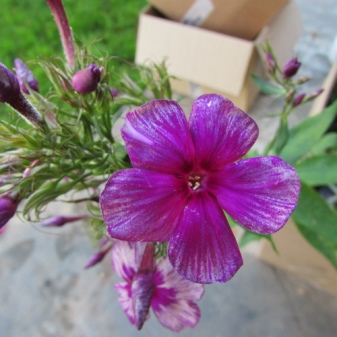
How to plant correctly?
This variety loves diffused lighting, without the scorching rays of the sun that can damage the leaves. It must be protected from drafts, location under trees and on the north side of the garden. The soil should be fertile and sufficiently moist, and water stagnation should also be avoided. In one place, the bush grows well for about 7 years, so you need to choose a large enough area.
In late April - early May or early September, before planting phlox, the earth must be dug up 35 cm deep. Humus is introduced into sandy soil, lime is added to acidic soil, good drainage is recommended for clay soils. The distance between plants should be between 45 and 75 cm, as the bushes grow in width. Garden soil is placed in the planting hole, fertilizers and watered. The phlox roots are placed 4 cm deep, and sprinkled with earth from the garden on top, compacted and abundantly watering the planted plant.

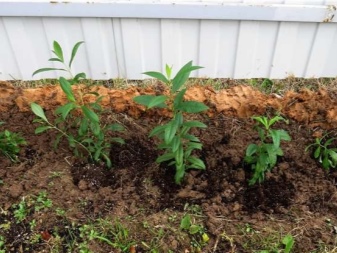
Growing recommendations
Despite the fact that the panicled "Dragon" phlox is unpretentious, practically not susceptible to diseases and frost-resistant, basic care rules should be followed.
- Watering. The plant needs to be regularly watered under the roots. It should be done every 2-3 days. If the weather is dry, you should water more often. After watering, it is advisable to remove weeds and loosen the soil near the bush.
- Top dressing. When planting, be sure to add compost and humus. If you add ash to the soil, you can improve the color of the flowers. In the spring, it is necessary to place nitrogen fertilizers in the ground. When it is time for flowering, preparations containing potassium or phosphorus are needed. It is advisable to apply top dressing in the early morning hours or in the evening.
- Pruning and wintering. At the time of the onset of cold weather, phlox should be cut so that they do not exceed 10 cm from the ground. It is advisable to mulch the soil. Variety "Dragon" does not require shelter for the winter, as it tolerates frost well. But young fragile bushes should be covered with spruce branches.
- Diseases and their prevention... This phlox can be affected by phomosis, powdery mildew, septoria.For prevention and treatment, it is recommended to treat the plant with a Bordeaux mixture, copper sulfate or a weak solution of potassium permanganate.


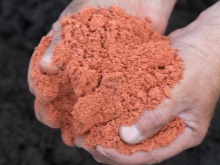
If the plant is attacked by slugs or nematodes and severely damaged it, then the bush should be dug up and burned. After that, the soil must be loosened and sprinkled with ash.
Breeding secrets
The Dragon phlox can be propagated in several ways.
- Division of the bush. This is the most convenient and easiest option. It is recommended to carry out this procedure in the fall or spring months. Divide the mother plant after 3 years of growth. Phlox should be dug up and cut off to 15 cm in height. With a sharp, clean knife, the mother bush is divided into several new plants so that each has buds on the stems. The bushes planted in this way bloom the next year.
- Cuttings... Phlox "Dragon" can also be propagated by cuttings. To do this, choose a strong branch. Next, you need to take the middle of the stem and carefully cut off the stalk with two internodes using a secateurs. After planting in the soil, it is watered and covered with a plastic container. After 2-3 weeks, the cutting will give roots.
- With the help of seeds. This is a less popular breeding method. The seeds are harvested in the fall, when the ripe boll turns brown. They should be planted in open loose soil immediately, as they can quickly lose their germination.
The distance between the phlox seeds should be at least 5 cm. They should be spread out on the soil surface, and then lightly sprinkled with earth.
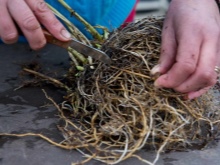

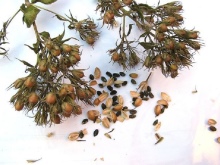
Use in landscape design
Phlox "Dragon" is appreciated for its unpretentiousness, winter hardiness and bright fragrant flowers. It is planted in parks, city flower beds, alpine hills, used as a background plant against the background, for example, of low hosts. This variety is ideal in combination with daylilies, astilba, garden geraniums. It looks beautiful with perennials such as tulips, irises, roses. Planted together with other varieties of phlox, "Dragon" will never get lost against their background thanks to its unique flowers.
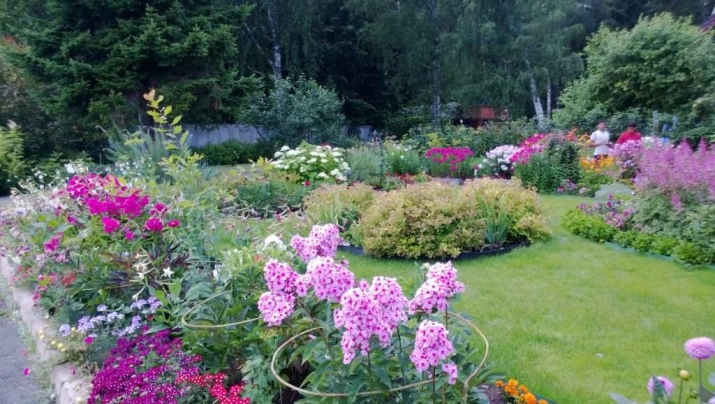





See below for the features of growing phlox.







































































































The comment was sent successfully.